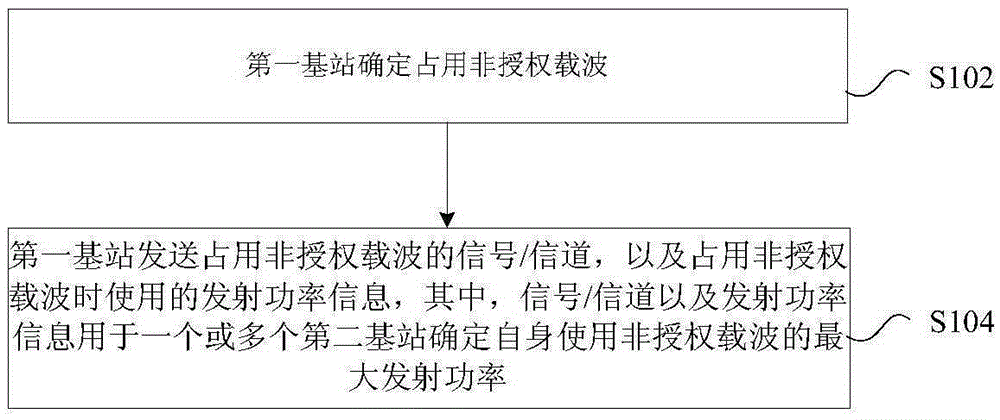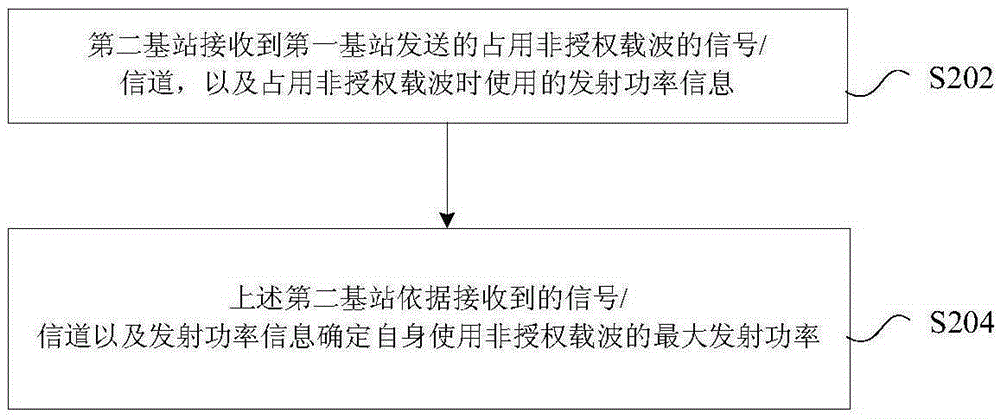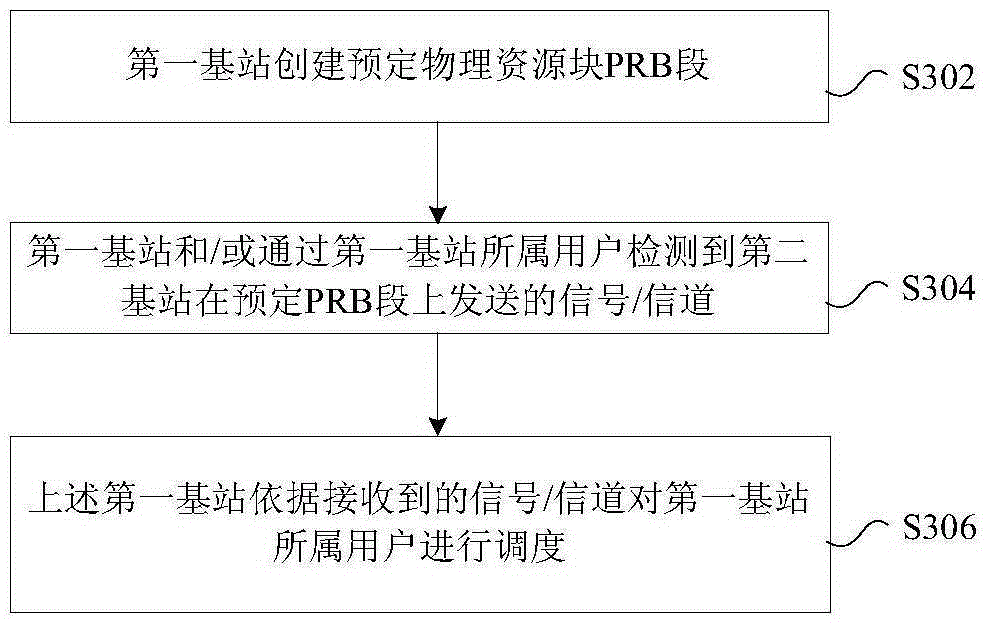Non-authorized carrier occupation processing method, apparatus, and system
A processing method and non-authorized technology, applied in the field of communication, can solve problems such as low throughput rate and interference in the area
- Summary
- Abstract
- Description
- Claims
- Application Information
AI Technical Summary
Problems solved by technology
Method used
Image
Examples
Embodiment 1
[0129] Figure 14 It is a schematic diagram of the second base station determining its own transmission power (coverage) according to the signal and related information of the first base station according to the preferred embodiment 1 of the present invention, as shown in Figure 14 As shown, the second base station (LAA-eNB2) can receive the energy of the first base station (LAA-eNB1) (for example, the received power is -60dBm), and exceeds the preset threshold of carrier busy and idle (assuming threshold X -62dBm), but the second base station is not within the illustrated coverage of the first base station (for example, the preamble (Preamble code) (PRACH) can hear each other, but the data coverage (eg, PDSCH) cannot hear each other) .
[0130] The first base station obtains the right to use the unlicensed carrier (for example, it can be obtained through LBT competition).
[0131] The first base station transmits (broadcasts) a signal / channel (ie, occupancy signal, occupan...
Embodiment 2
[0146] Figure 15 is a schematic diagram of the first base station determining its own transmission power (coverage) according to the request of the second base station according to a preferred embodiment of the present invention, as shown in Figure 15As shown, the second base station (LAA-eNB2) is within the coverage of the first base station (LAA-eNB1). The second base station can hear the physical downlink shared channel (Physical Downlink Shared CHannel, PDSCH for short) of the first base station.
[0147] The first base station obtains the right to use the unlicensed carrier (for example, through LBT competition).
[0148] The first base station transmits (broadcasts) a signal / channel (ie, occupancy signal, occupancy signal) that occupies an unlicensed carrier.
[0149] The first base station sends (broadcasts) the transmission power used when occupying the unlicensed carrier this time.
[0150] The second base station receives the above signal / channel.
[0151] The ...
Embodiment 3
[0166] Figure 16 is a schematic diagram of the first base station and / or the self-serving UE requesting the second base station to reduce the transmit power according to a preferred embodiment of the present invention, as shown in Figure 16 As shown, the two base stations can hear each other (for example, the Preamble can hear, but the PDSCH cannot hear) and there is a certain coverage overlapping area. The UE served by the first base station is in a coverage overlap area (ie, may be interfered by the second base station).
[0167] The first base station (LAA-eNB1) and / or the user equipment (UE1) served by itself (UE1; only one UE is described in this example, but there can be more than one) sends a request to the second base station (LAA-eNB2) to the second base station Signal / channel with reduced transmit power. It is assumed that the first base station directly sends a dedicated Preamble to the second base station. For example, four dedicated Preambles are divided, eac...
PUM
 Login to View More
Login to View More Abstract
Description
Claims
Application Information
 Login to View More
Login to View More - R&D
- Intellectual Property
- Life Sciences
- Materials
- Tech Scout
- Unparalleled Data Quality
- Higher Quality Content
- 60% Fewer Hallucinations
Browse by: Latest US Patents, China's latest patents, Technical Efficacy Thesaurus, Application Domain, Technology Topic, Popular Technical Reports.
© 2025 PatSnap. All rights reserved.Legal|Privacy policy|Modern Slavery Act Transparency Statement|Sitemap|About US| Contact US: help@patsnap.com



